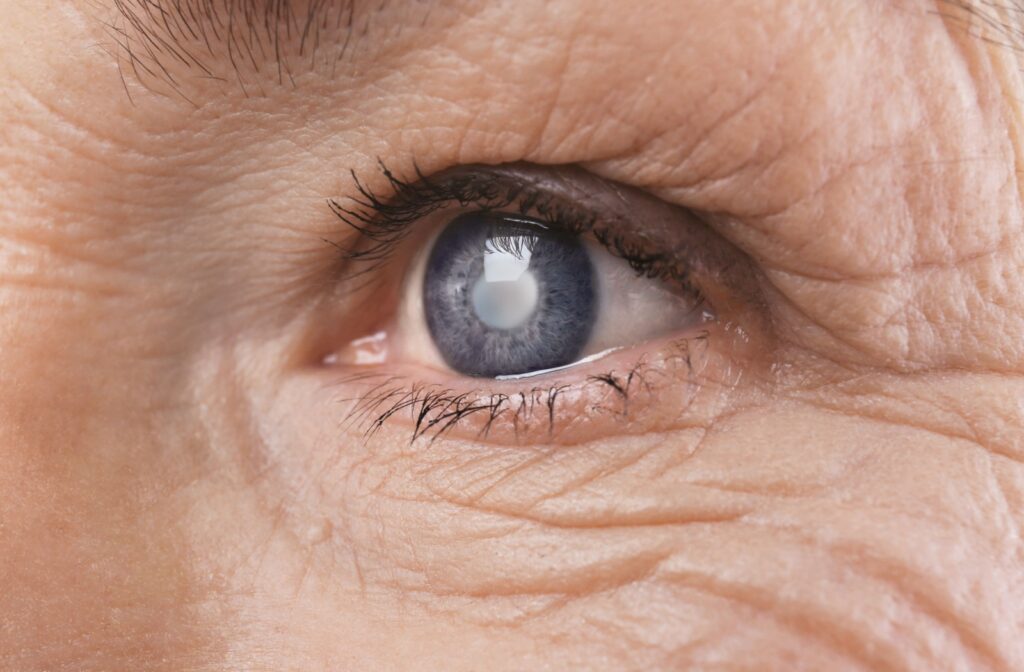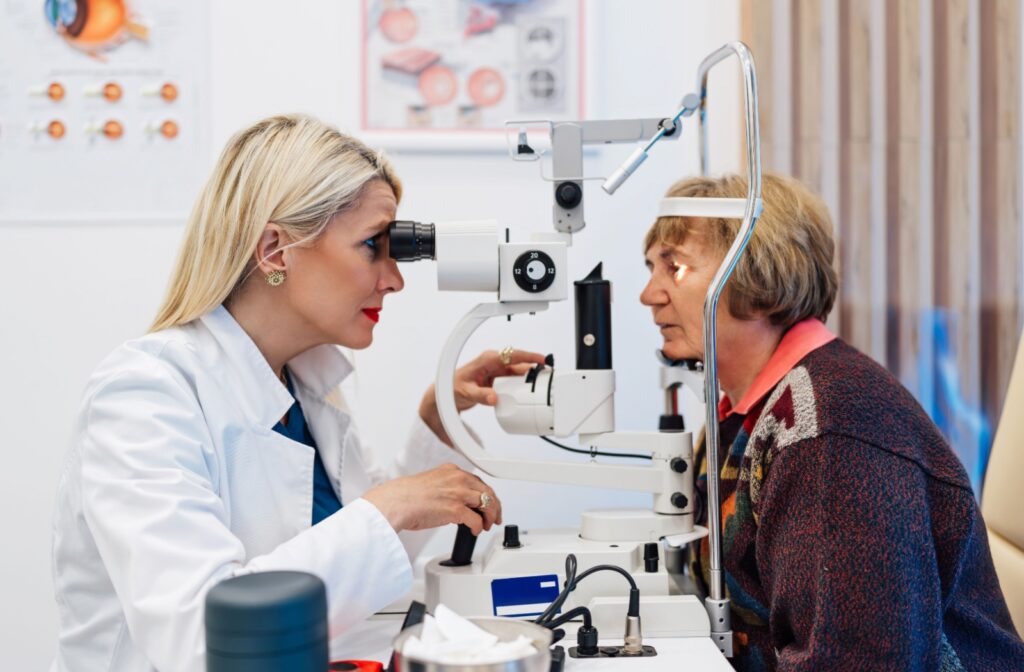Cataracts are one of the most common vision problems affecting millions of people worldwide, and if you’ve noticed changes in your vision—like blurriness, difficulty seeing at night, or colors appearing less vibrant—it’s understandable to feel concerned.
Optometrists are well-equipped to diagnose cataracts during routine eye exams, making them a critical first step in addressing this vision concern. Protecting your vision begins with understanding conditions like cataracts, and taking proactive steps to address them can make a meaningful difference in your eye health.
Cataracts & the Optometrist’s Role
Cataracts develop when proteins in the eye’s lens break down and clump together, creating a cloudy area that obstructs light from passing clearly through to the retina. This process usually progresses gradually and can affect one or both eyes. Symptoms commonly include:
- Blurry vision
- Light sensitivity
- Poor night vision
- Faded color vision
- Double vision
- Regularly changing prescriptions
Optometrists play a vital role in detecting cataracts early. Regular eye exams are essential for identifying subtle changes in vision and pinpointing abnormalities in the lens. Through these evaluations, an optometrist can confirm whether cataracts may be the cause of your visual difficulties and provide guidance on the next steps for management.
How Optometrists Diagnose Cataracts
During an eye exam, optometrists use specialized tools and techniques to evaluate the health of your eyes and assess for cataracts. They may Several diagnostic procedures might be employed, including:
- Visual acuity test: This test measures how well you can see at various distances using an eye chart. Reduced visual clarity could indicate the presence of cataracts.
- Slit-lamp examination: A slit lamp is a high-intensity microscope that allows optometrists to closely examine the eye’s structures, including the cornea, lens, and retina. It helps detect cataract-related clouding or other abnormalities in the lens.
- Retinal examination: The retina is a key indicator of healthy vision, and a dilated eye exam is one of the best ways to get a direct look at it. Optometrists use eye drops to dilate your pupils and get a clear view of the back of the eye. This helps them rule out other conditions that may mimic cataract symptoms.

Who Is at Risk for Cataracts?
Cataracts are a natural part of aging, but certain factors may increase the likelihood of them occurring early or being more severe. Key risk factors include:
- Being over 40
- A family history of cataracts
- Excessive UV exposure
- Diabetes
- Smoking
- Eye injury or surgery
- Certain medications, such as corticosteroids
Managing Cataracts
Optometrists employ a variety of strategies to help people with mild to moderate cataracts manage the condition and maintain their vision. Many times, glasses or contact lenses can correct refractive errors that cataracts can cause.
There are also lifestyle modifications that can reduce eye strain and improve visual performance. These can include using brighter lighting at home or work environments, wearing sunglasses to minimize glare from sunlight, and taking regular breaks during visually demanding tasks. Some of these techniques may slow cataract growth, but as the condition advances, more of your vision will be affected.
Often, this is where your optometrist can refer you to an ophthalmologist.
The Difference Between Optometrists & Ophthalmologists
While optometrists are essential for detecting cataracts and managing overall eye health, they’re only one part of a much larger eye care team. Optometrists are healthcare professionals focused on vision care, including conducting eye exams, diagnosing refractive errors, prescribing corrective lenses, and detecting eye diseases like cataracts. However, they do not perform surgery.
Ophthalmologists, on the other hand, are medical doctors who specialize in eye surgery and advanced eye care. They treat complex eye diseases and perform procedures like cataract surgery to remove the clouded lens and replace it with an artificial lens.
When It’s Time to See an Ophthalmologist
Once cataracts advance to the point of severely impairing daily activities, your optometrist will likely recommend cataract surgery. This procedure is very safe and widely performed by ophthalmologists. It involves removing the cloudy lens and replacing it with a clear artificial intraocular lens (IOL).
Cataract surgery takes about 1 hour and is typically an outpatient procedure, meaning you can return home the same day. Optometrists and ophthalmologists often work together during this process. Your optometrist typically manages pre- and post-surgery care, supporting your recovery so that your eyes heal properly and that your vision adjusts as expected.
Start Your Journey to Clearer Vision
Regular eye exams are the key to early cataract detection and maintaining long-term eye health. By scheduling routine check-ups with an experienced optometrist, you can address potential concerns before they interfere with your daily life.
Cataracts can be stressful, but when you’re in good hands, you can put that stress aside. At Total Vision Pleasanton, we’re passionate about helping you achieve clear vision. Our team will help co-manage your condition, from early cataract diagnosis to personalized treatments and guidance every step of the way.
Don’t wait for cloudy vision to slow you down. Book an appointment and take the first step toward clearer, brighter views.



